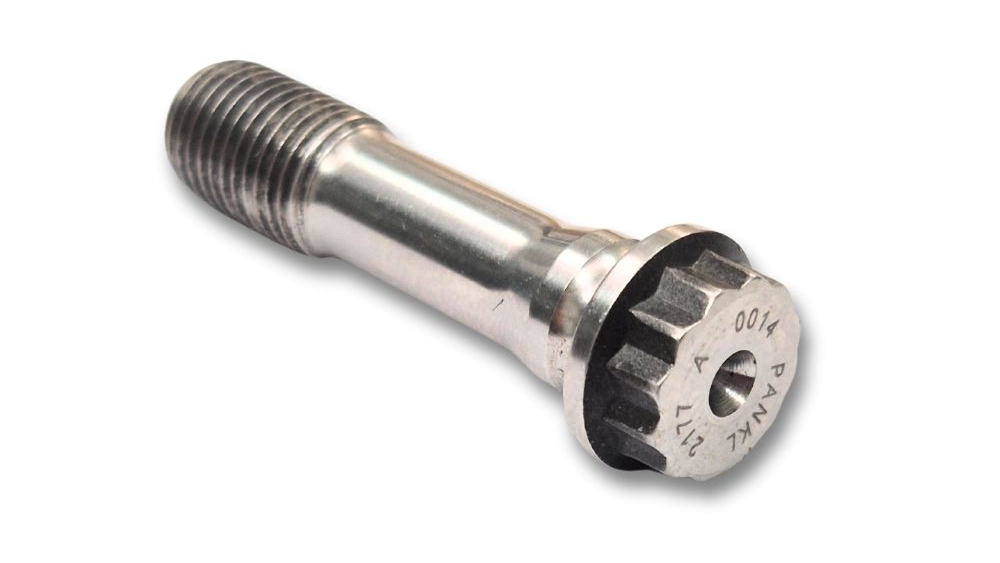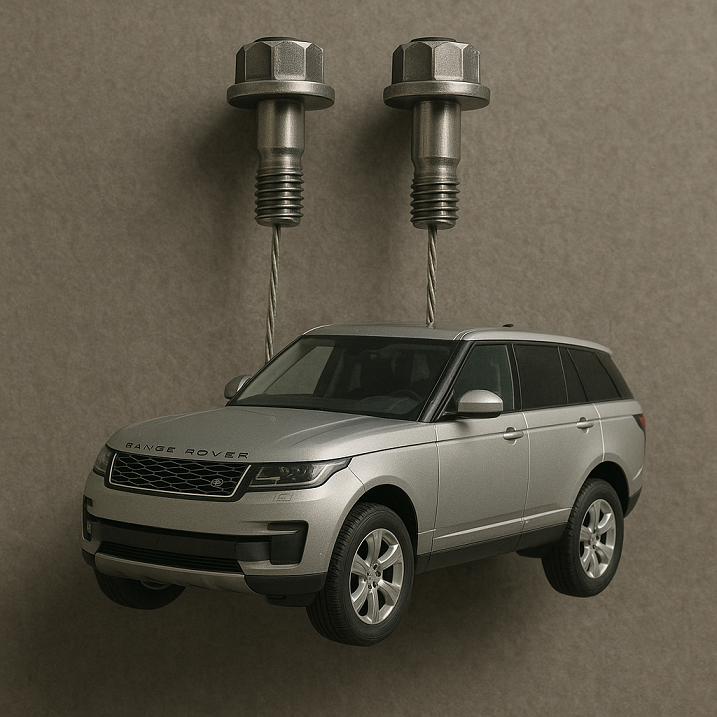FORMULA 1 CON ROD BOLT TECH
If someone asked you what the most complicated part in a Formula 1 engine is, you probably wouldn’t instantly think of the connecting rod bolt. But this humble-looking fastener is in fact incredibly complex.
(By the way, we’ve just received a handful of con rod bolts that Cosworth had removed from one of their TJ Formula 1 race engines that are now available for sale.)

When I started as an engine designer at Cosworth way back in the mid-1990s, one of the first parts that I got to design was the con rod bolt for the VJ Formula 1 engine.
On the face of it, this might seem like just another fastener, albeit one that is highly loaded. But I was told in no uncertain terms that this is no ordinary bolt. In fact, I remember being told to add the words “THIS IS THE MOST IMPORTANT PART OF THE ENGINE” to the drawing.
As a measure of just how complicated the con rod bolt for an F1 engine was, the size of drawing ended up being A1 (eight times the area of an A4 drawing), which seems like a lot of space for a part that is less than 2 inches long. But over half of the drawing was devoted to long lists of instructions that detailed how the bolt was to be forged, machined, finished, inspected and handled.
All of this care and attention was necessary because these rod bolts were the only components that were stopping the piston from being ejected upwards every time it reached TDC. In an F1 engine that was revving to 20,000 rpm (which is what the Cosworth CA could reach in 2006), that was over 300 times per second.
In addition to this insane frequency, the loading on the rod bolt was huge. At 20,000 rpm the piston has a deceleration of over 10,000 G. Even for a 250g piston, that’s equivalent to it weighing 2.5 metric tons – that’s like hanging a Range Rover from just two rod bolts!

(This was the best image that AI could generate. I think our jobs are safe for now.)
So to make the bolt as strong as possible, there were loads of steps that had to be carried out. First of all, the material was the best multiphase steel alloy that was available at the time. The head of the bolt was then forged, giving the optimum grain flow.
The downside to the specialist material and the need for forging was the lead time. It could take as long as 9 months to produce the bolts, which often meant that the rod bolt was one of the first components to be designed, before even the cylinder block and heads were started.
Secondly, the threads ended up being a custom size. The radius in the roots of the threads was meticulously defined by an international standard, so the actual thread naming convention was MJ9x1.0 4h-6h to BS6293 Parts 1 & 2, to be exact.
The pitch in the corresponding threads in the con rod weren’t the same as the pitch of the bolt thread. It was deliberately ‘depitched’, so that when the threads in the rod were stretched under load they would match up with the shape of the threads on the bolt. This in turn helped to even out the stresses in all of the threads.
There was also additional instructions to make sure that the shank of the bolt was as smooth as possible and free from any scratches, which might otherwise act as a stress razor. Later bolts, like the ones from the TJ engine, were superfinished to give them a mirror-like finish.
On top of that, there were incredibly tight geometric and dimensional (GD&T) tolerances that ensured that the face of the bolt was as perpendicular as possible to the bolt axis and thread (the maximum allowable runout was just 76 microns).
So all in all, the Formula 1 con rod bolt ended up being one of the most complicated parts in the entire engine.
Don’t forget, you can get hold of one of these rod bolts from the Memorabilia section of our on-line shop.
We are Cosworth’s official distributor for their historic engine parts, and we supply a wide range of parts for a number of different Cosworth historic engines, from BD, YB and DFV through to the more recent F1 engines like the CK, TJ and CA. Our mission is to help our customers build better engines by supplying high quality parts backed up with a design consultancy that utilises over 25 years experience in top level motorsport.


